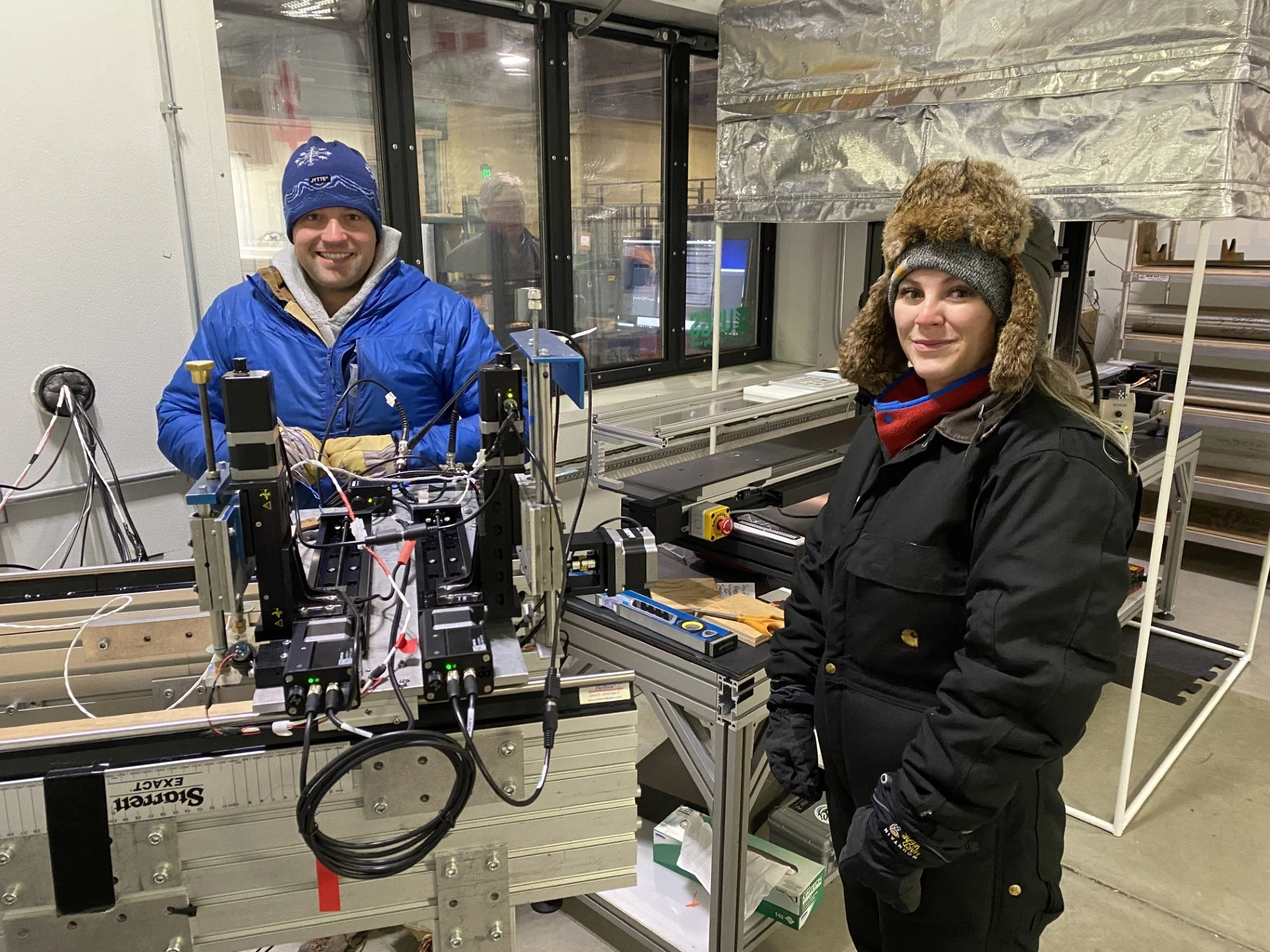Unpacking Ice
Blog post by COLDEX Postdoc Asmita Banerjee
Earlier this year in June, a group of scientists of varying career stages from six different institutions arrived at National Science Foundation Ice Core Facility (NSF-ICF), Lakewood, Colorado for two weeks. The goal? To unbox, unpack, process, and cut Antarctic ice cores drilled from the Allan Hills Blue Ice Area in 2022-2023 and earlier field seasons for a multitude of different measurements.
One of the major goals of the two weeks was directly aligned with the primary goal of COLDEX: to find the oldest possible ice going back to 5 million years and measure directly its atmospheric carbon dioxide concentrations. During the first week of our time at the ICF, we unpacked and processed the bottom 20m of the blue ice drill (BID) core drilled during the last field season. This is the ice we anticipate being really old! We sampled the ice for measuring argon isotopes in the gases trapped within to infer the age of the ice. Concurrently, we also sampled the ice to measure the concentrations of atmospheric carbon dioxide with the goals of directly inferring Earth’s atmospheric evolution (that has so far been estimated using indirect proxy reconstructions) and climate history going back as far back in time as possible.
Week 1 staff at the ICF: from L to R: Dr. Sarah Shackleton, postdoc at Princeton University, Margot Shaya, graduate student at University of Washington, Theo Carr, staff at NSF-ICF, Liam Kirkpatrick, graduate student at University of Washington, Eads Fouche, REU student at University of Washington, Julia Marks Peterson, graduate student at Oregon State University, Richard Nunn, assistant curator at NSF-ICF, Dr. Asmita Banerjee, postdoc at Oregon State University, Jamie O'Reilly, REU student at University of Washington, Dr. John Fegyveresi, assistant professor at Northern Arizona University, Curt La Bombard, curator at NSF-ICF, Geoff Hargreaves, past curator at NSF-ICF and Dr. Andrei Kurbatov, professor at University of Maine.
While a group of us unpacked and unboxed the ice from the latest field season and spent time carefully making decisions about how best to sample the highly fractured ice for these gas measurements (all the while being inside a -25ºC freezer!), another group performed Electrical Conductivity Measurements (ECM) on the previously drilled BID Allan Hills ice cores. They performed these measurements in not just one but two perpendicular planes to gain information about the layering in the ice cores and estimate their true dip. Additionally, another group also prepared thick and thin sections of the ice to investigate its microstructural properties like bubble elongation and crystal fabric of the ice itself.
ICF staff Theo Carr and REU student Eads Fouche unpacks a box of Allan Hills ice cores
Graduate student Liam Kirkpatrick and REU student Jamie O’Reilly at the ICF
During the second week of our time at the ICF, we processed the top 70 m of the BID core for Continuous Flow Analysis (CFA) to continuously measure methane concentrations, water isotopes of the ice and dust concentrations. Additionally, we also sampled previously drilled Allan Hills ice cores to measure dust concentrations and its chemical composition, to infer changes in dust source regions and wind patterns of the past, and concentrations of trace gases like acetylene to reconstruct Earth’s fire histories.
Week 2 staff at the ICF: from L to R: Austin Carter, graduate student at Scripps Institute of Oceanography, Alissa Choi, REU student at Scripps Institute of Oceanography, Curt La Bombard, curator at NSF-ICF, Dr. Asmita Banerjee, postdoc at Oregon State University, Richard Nunn, assistant curator at NSF-ICF, Jenn Campos Ayala, graduate student at University of California, Irvine, Dr. Elena Korotkikh, scientist at University of Maine and Theo Carr, staff at NSF-ICF.
REU student Alissa Choi examines an Allan Hills ice core
Being at the ICF for the two weeks in June felt like being at a science camp of sorts where a bunch of us spent a whole lot of time inside a freezer to perform seemingly simple tasks (that were made harder by the cold) to eventually learn more about how our atmosphere and climate behaved (hopefully as far back as 5 million years ago!) Interspersed between the days of hard work were group lunches, happy hours, and a LOT of snacking that were essential for providing a positive, welcoming work environment for all of us to thrive in!
Here’s looking forward to the incredible science that will be done using these ice cores and all the knowledge we’ll gain about Earth’s climate history!





